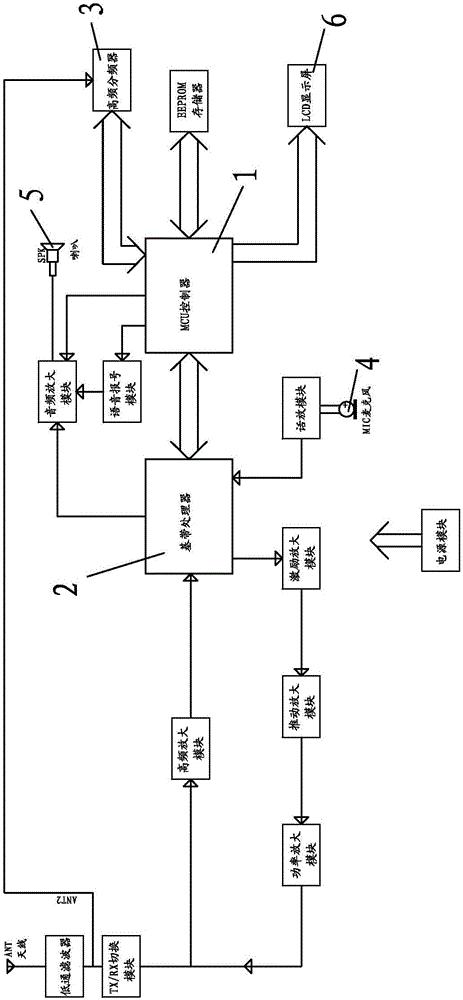Interphone
A walkie-talkie and ontology technology, which is applied in two-party line system stations, electrical components, transmission systems, etc., can solve the problems of no display screen, inconsistent radio frequency, and the inability to communicate with walkie-talkies, etc., and achieve the effect of reducing production costs
- Summary
- Abstract
- Description
- Claims
- Application Information
AI Technical Summary
Problems solved by technology
Method used
Image
Examples
Embodiment Construction
[0017] In order to further explain the technical solution of the present invention, the present invention will be described in detail below through specific examples.
[0018] Such as figure 1 As shown, the present invention provides a walkie-talkie, including a walkie-talkie body, the walkie-talkie body has a shell, and an MCU controller 1, a baseband processor 2, a high frequency divider 3, a MIC microphone 4 and a loudspeaker integrated in the shell Speaker 5. The walkie-talkie body receives and sends signals through the antenna. The MCU controller 1 is bidirectionally connected to the baseband processor 2 and the high-frequency divider 3 respectively, and the antenna is connected to the input end of the baseband processor through a low-pass filter, a TX / RX switching module and a high-frequency amplification module in turn, and the antenna It is also connected to the input terminal of the high-frequency divider through a low-pass filter. The output end of the MCU control...
PUM
 Login to View More
Login to View More Abstract
Description
Claims
Application Information
 Login to View More
Login to View More - R&D
- Intellectual Property
- Life Sciences
- Materials
- Tech Scout
- Unparalleled Data Quality
- Higher Quality Content
- 60% Fewer Hallucinations
Browse by: Latest US Patents, China's latest patents, Technical Efficacy Thesaurus, Application Domain, Technology Topic, Popular Technical Reports.
© 2025 PatSnap. All rights reserved.Legal|Privacy policy|Modern Slavery Act Transparency Statement|Sitemap|About US| Contact US: help@patsnap.com

